NCERT Solutions for Class 10 Science Chapter 3 Metal and Non-Metals
The Class 10 NCERT Solutions for Science Chapter 3 Metal and Non-Metals includes all the intext and exercise questions. Class 10 Science Chapter 3 Metal and Non-Metals NCERT questions and answers help students to clear their doubts and to obtain good marks in Class 10 board exam. All the solutions provided in this article are strictly based on the CBSE syllabus and curriculum.
Class 10 Science Chapter 3 NCERT Questions and Answers
Class 10 Science Chapter 3 Metal and Non-Metals NCERT Questions and Answers are prepared by experts with a detailed explanation that will help students complete their assignments & homework. Having a good grasp over CBSE NCERT Solutions for Class 10 Science will further help the students in their preparation for board exams and other competitive exams such as NTSE, Olympiad, etc.
NCERT Solutions for Class 10 Science Chapter 3 Intext Questions
Intext Questions (Page No. 40)
Question 1: Give an example of a metal which
(i) is a liquid at room temperature.
(ii) can be easily cut with a knife.
(iii) is the best conductor of heat.
(iv) is a poor conductor of heat.
Answer: (i) Metal that exists in liquid state at room temperature → Mercury
(ii) Metal that can be easily cut with a knife → Sodium, Potassium
(iii) Metal that is the best conductor of heat → Silver, Gold
(iv) Metals that are poor conductors of heat → Mercury and lead
Question 2: Explain the meanings of malleable and ductile.
Answer: Malleable: Substances that can be converted into thin sheets by beating are called malleable. Most of the metals are malleable. Gold and Silver are most malleable metals.
Ductile: Substances that can be drawn into thin wires are called ductile. Most of the metals are ductile. Gold is the most ductile metal.
Intext Questions (Page No. 46)
Question 1: Why is sodium kept immersed in kerosene oil?
Answer: Metals such as potassium and sodium react so vigorously that they catch fire if kept in the open. Hence, to protect them and to prevent accidental fires, they are kept immersed in kerosene oil.
Question 2: Write equations for the reactions of
(i) iron with steam
(ii) calcium and potassium with water
Answer: (i) Iron react with steam to form the metal oxide and hydrogen.
3Fe(s) + 4H2O(g) → Fe3O4(s) + 4H2(g)
(ii) The reaction of calcium with water is exothermic but the heat evolved is not sufficient for the hydrogen to catch fire.
Ca(s) + 2H2O(l) → Ca(OH)2(aq) + H2(g)
Calcium starts floating because the bubbles of hydrogen gas formed stick to the surface of the metal.
Potassium react violently with cold water and its reaction is so violent and exothermic that the evolved hydrogen immediately catches fire.
2K(s) + 2H2O(l) → 2KOH(aq) + H2(g) + heat energy
Question 3: Samples of four metals A, B, C and D were taken and added to the following solution one by one. The results obtained have been tabulated as follows.

Use the Table above to answer the following questions about metals A, B, C and D.
(i) Which is the most reactive metal?
(ii) What would you observe if B is added to a solution of Copper (II) sulphate?
Arrange the metals A, B, C and D in the order of decreasing reactivity
Answer: (i) As per reactivity series, Iron is most reactive metal among Iron, Silver and Copper. Since B can displace Iron from its sulphate, so B is the most reactive metal.
(ii) As B is more reactive than Iron (As discussed in answer (i)), so it will displace Copper from its Copper Sulphate solution.
(iii) B is most reactive as discussed in part (i) and D is the least reactive metal as unable to displace any of the solutions. Copper is more reactive than Silver and metal A can displace Copper, so A is more reactive than C.
Hence, the order of decreasing reactivity is B > A > C > D.
Question 4: Which gas is produced when dilute hydrochloric acid is added to a reactive metal? Write the chemical reaction when iron reacts with dilute H2SO4.
Answer: When reactive metals react with dilute hydrochloric acids, gives a salt and hydrogen gas
Metal + Dilute acid → Salt + Hydrogen
Reaction between Fe and H2SO4: Fe + H2SO4 → FeSO4 + H2
Question 5: What would you observe when zinc is added to a solution of iron (II) sulphate? Write the chemical reaction that takes place.
Answer: Zinc is more reactive than Iron. When Zn is added to Iron (II) Sulphate, Zinc displaces Iron from its solutions and Zinc sulphate is formed.
Zn(s) + FeSO4(aq) → ZnSO4(aq) + Cu(s)
Intext Questions (Page No. 49)
Question 1: (i) Write the electron-dot structures for sodium, oxygen and magnesium.
(ii) Show the formation of Na2O and MgO by the transfer of electrons.
(iii) What are the ions present in these compounds?
Answer:
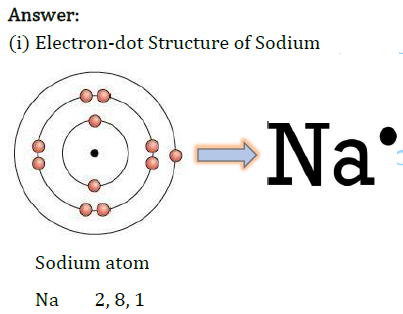
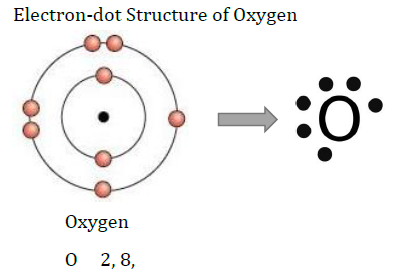
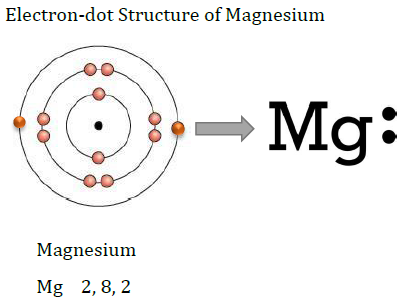
(ii) Formation of by transfer of electron
Two sodium atoms transfer their 2 outermost electrons to an oxygen atom. By losing two electrons, the two sodium atoms form tow sodium ions (2Na+). And by gaining two electrons, the oxygen atom forms an oxide ion (O2-).
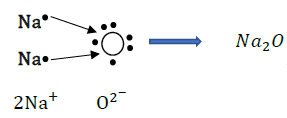
Formation of by transfer of electron
When magnesium reacts with oxygen, the magnesium atom transfers its two outermost electrons to an oxygen atom. By losing two electrons, the magnesium atoms form a magnesium ion (Mg2+) and by gaining two electrons, the oxygen atom forms an oxide ion (O2-).

(iii) The ions present in sodium oxide compound (Na2O) are sodium ions (2Na+) and oxide ions (O2-).
The ions present in Magnesium oxide compound (MgO) are magnesium ions Mg2+ and oxide ions (O2-).
Question 2: Why do ionic compounds have high melting points?
Answer: Ionic compounds have high melting and boiling points. Because ionic compounds are formed by the attraction force of two opposite ions and a considerable amount of energy is required to break this strong inter-ionic attraction.
Intext Questions (Page No. 53)
Question 1: Define the following terms.
(i) Mineral
(ii) Ore
(iii) Gangue
Answer: (i) Mineral: The elements or compounds, which occur naturally in the earth’s crust, are known as minerals.
(ii) Ore: If minerals contain a very high percentage of a particular metal and the metal can be profitably extracted from it. These minerals are called ores.
(iii) Gangue: Ores mined from the earth are usually contaminated with large amounts of impurities such as soil, sand, etc., called gangue.
Question 2: Name two metals which are found in nature in the free state.
Answer: The metals which are the least reactive, they are often found in a free state.
For example: Gold, silver, platinum and copper are found in the free state.
Question 3: What chemical process is used for obtaining a metal from its oxide?
Answer: Metals in the low of the activity series are very unreactive. The oxides of these metals can be reduced to metals by heating alone.

The metals in the middle of the activity series such as iron, zinc, lead, copper, etc., are moderately reactive. These metal oxides are reduced to the corresponding metals by using suitable reducing agents
ZnO(s) + C(s) → Zn(s) + CO(g)
The metals high up in the reactivity series are very reactive. They are separated from their oxides by electrolysis process.
Intext Questions (Page No. 55)
Question 1: Metallic oxides of zinc, magnesium and copper were heated with the following metals.
| Metal | Zinc | Magnesium | Copper |
| Zinc Oxide | |||
| Magnesium oxide | |||
| Copper oxide |
Answer: Magnesium is the most reactive among these three metals and Zinc is more reactive than Copper. So, Magnesium will displace Zinc oxide and Copper oxide whereas Zinc will displace Copper oxide only.
| Metal | Zinc | Magnesium | Copper |
| Zinc Oxide | No Reaction | Displacement reaction | No Reaction |
| Magnesium oxide | No Reaction | No Reaction | No Reaction |
| Copper oxide | Displacement reaction | Displacement reaction | No Reaction |
Question 2: Which metals do not corrode easily?
Answer: The metals which are the least reactive, do not corrode easily.
For example: Gold, silver, platinum and copper.
Question 3: What are alloys?
Answer: An alloy is a homogeneous mixture of two or more metals, or a metal and a non-metal.
For example:
- Stainless steel is an alloy of Nickel and Chromium.
- Amalgam is an alloy of Mercury.
- Brass is an alloy of Copper and Zinc.
- Bronze is an alloy of Copper and Tin.
- Solder is an alloy of Lead and Tin.
NCERT Solutions for Class 10 Science Chapter 3 Exercise Questions
Question 1: Which of the following pairs will give displacement reactions?
(a) NaCl solution and copper metal
(b) MgCl2 solution and aluminium metal
(c) FeSO4 solution and silver metal
(d) AgNO3 solution and copper metal
Answer: (d) AgNO3 solution and copper metal
Question 2: Which of the following methods is suitable for preventing an iron frying pan from rusting?
(a) Applying grease
(b) Applying paint
(c) Applying a coating of zinc
(d) all of the above.
Answer: (c) Applying a coating of zinc
Question 3: An element reacts with oxygen to give a compound with a high melting point. This compound is also soluble in water. The element is likely to be
(a) calcium
(b) carbon
(c) silicon
(d) iron
Answer: (a) The element is likely to be calcium.
Question 4: Food cans are coated with tin and not with zinc because
(a) zinc is costlier than tin.
(b) zinc has a higher melting point than tin.
(c) zinc is more reactive than tin.
(d) zinc is less reactive than tin.
Answer: (c) zinc is more reactive than tin
Question 5: You are given a hammer, a battery, a bulb, wires and a switch.
(a) How could you use them to distinguish between samples of metals and non-metals?
(b) Assess the usefulness of these tests in distinguishing between metals and non-metals.
Answer: (a) With the hammer, we can beat the sample and if it can be beaten into thin sheets (that is, it is malleable), then it is a metal otherwise a non-metal. Similarly, we can use the battery, bulb, wires, and a switch to set up a circuit with the sample. If the sample conducts electricity, then it is a metal otherwise a non-metal.
(b) The above tests are useful in distinguishing between metals and non-metals as these are based on the physical properties. No chemical reactions are involved in these tests.
Question 6: What are amphoteric oxides? Give two examples of amphoteric oxides.
Answer: Oxides that react with both acids and bases to form salt and water are known as amphoteric oxides. Examples: PbO and Al2O3.
Amphoteric oxides are the one which reacts with both acids and bases to form salt and water. Examples: Lead oxide – PbO and Aluminium oxide – Al2O3.
Question 7: Name two metals which will displace hydrogen from dilute acids, and two metals which will not.
Answer: Metals that are more reactive than hydrogen displace it from dilute acids.
For example: sodium and potassium.
Metals that are less reactive than hydrogen do not displace it.
For example: copper and silver.
Question 8: In the electrolytic refining of a metal M, what would you take as the anode, the cathode and the electrolyte?
Answer: In the process of electrolytic refining of metal called ‘M’, An impure and thick block of metal M. is considered as anode, Thin strip or wire of pure metal M is taken as anode A suitable salt solution of metal M is considered as the electrolyte
Question 9: Pratyush took sulphur powder on a spatula and heated it. He collected the gas evolved by inverting a test tube over it, as shown in figure below.
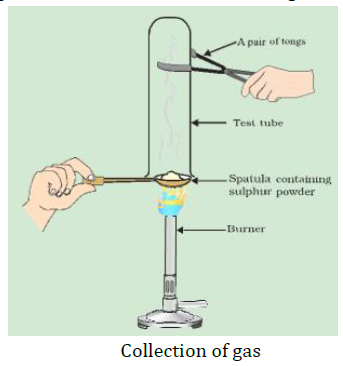
(a) What will be the action of gas on
(i) dry litmus paper?
(ii) moist litmus paper?
(b) Write a balanced chemical equation for the reaction taking place.
Answer: (a) (i) There will be no action on dry litmus paper.
(ii) Since the gas is sulphur dioxide (SO2), it turns moist blue litmus paper to red because sulphur dioxide reacts with moisture to form sulphurous acid.
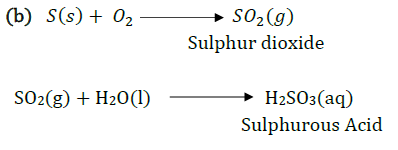
Question 10: State two ways to prevent the rusting of iron.
Answer: Two ways to prevent the rusting of iron are:
Oiling, greasing, or painting: By applying oil, grease, or paint, the surface becomes water proof and the moisture and oxygen present in the air cannot come into direct contact with iron. Hence, rusting is prevented.
Galvanization: An iron article is coated with a layer of zinc metal, which prevents the iron to come in contact with oxygen and moisture. Hence, rusting is prevented
Question 11: What type of oxides is formed when non-metals combine with oxygen?
Answer: When non-metals combine with oxygen it forms either acidic or neutral oxides. Ex: N2O5 or N2O3 is an acidic oxide; CO is a neutral oxide.

Question 12: Give reasons?
(a) Platinum, gold and silver are used to make jewellery.
(b) Sodium, potassium and lithium are stored under oil.
(c) Aluminium is a highly reactive metal, yet it is used to make utensils for cooking.
(d) Carbonate and sulphide ores are usually converted into oxides during the process of extraction.
Answer: (a) Platinum, gold, and silver are used to make jewellery because they are very lustrous. Also, they are very less reactive and do not corrode easily.
(b) Sodium, potassium, and lithium are very reactive metals and react very vigorously with air as well as water. Therefore, they are kept immersed in kerosene oil in order to prevent their contact with air and moisture.
(c) Though aluminium is a highly reactive metal, it is resistant to corrosion. This is because aluminium reacts with oxygen present in air to form a thin layer of aluminium oxide. This oxide layer is very stable and prevents further reaction of aluminium with oxygen. Also, it is light in weight and a good conductor of heat. Hence, it is used to make cooking utensils.
(d) Carbonate and sulphide ores are usually converted into oxides during the process of extraction because metals can be easily extracted from their oxides rather than from their carbonates and sulphides.
Question 13: You must have seen tarnished copper vessels being cleaned with lemon or tamarind juice. Explain why these sour substances are effective in cleaning the vessels.
Answer: Copper reacts with moist carbon dioxide in air to form copper carbonate and as a result, copper vessel loses its shiny brown surface forming a green layer of copper carbonate. The citric acid present in the lemon or tamarind neutralises the basis copper carbonate and dissolves the layer. That is why, tarnished copper vessels are cleaned with lemon or tamarind juice to give the surface of the copper vessel its characteristic lustre.
Question 14: Differentiate between metal and non-metal on the basis of their chemical properties.
Answer:
| Metals | Non-metals |
| Metals are electropositive. | Non-metals are electronegative |
| They react with oxygen to form basic oxides. | They react with oxygen to form acidic or neutral oxides. |
| They react with water to form oxides and hydroxides. Some metals react with cold water, some with hot water, and some with steam. | They do not react with water. |
| Metals are lustrous. | Non-metals are non-lustrous; graphite is the exception |
| Good reducing agents. | Good oxidizing agents. |
| Metals are the good conductors of electricity and heat. | Non-metals are non-conductors of electricity and heat; graphite is the exception |
| All metals are solids except mercury. | Non-metals are in solid-liquid and gaseous states |
Question 15: A man went door to door posing as a goldsmith. He promised to bring back the glitter of old and dull gold ornaments. An unsuspecting lady gave a set of gold bangles to him which he dipped in a particular solution. The bangles sparkled like new but their weight was reduced drastically. The lady was upset but after a futile argument the man beat a hasty retreat. Can you play the detective to find out the nature of the solution he had used?
Answer: He must have dipped the gold in the solution of aqua regia − a 3:1 mixture of conc. HCl and conc. HNO3. Aqua regia is a fuming, highly corrosive liquid. It dissolves gold in it. After dipping the gold ornaments in aqua regia, the outer layer of gold gets dissolved and the inner shiny layer appears. That is why the weight of gold ornament reduced.
Question 16: Give reasons why copper is used to make hot water tanks and not steel (an alloy of iron).
Answer: Copper does not react with cold water, hot water, or steam. However, iron reacts with steam. If the hot water tanks are made of steel (an alloy of iron), then iron would react vigorously with the steam formed from hot water.
Topics covered under Class 10 Science Chapter 3 Metal and Non-Metals
Below we have listed the topics discussed in NCERT Solutions for Class 10 Science Chapter 3. The list gives you a quick look at the different topics and subtopics of this chapter.
| Section in NCERT Book | Topics Discussed |
|---|---|
| 3.1 | Physical Properties of Metals |
| 3.2 | Physical Properties of Non-metals |
| 3.2.5 | The Reactivity Series |
| 3.3 | How do Metals and Non-metals React? |
| 3.3.1 | Properties of Ionic Compounds |
| 3.4 | Occurrence of Metals |
| 3.5 | Corrosion |
NCERT Solutions for Class 10 Science Chapter 3 – A Brief Discussion
Chapter Overview: In this chapter, you will learn about the physical and chemical properties metals and non-metals. Physical properties mainly include physical state, luster, hardness, ductility, conductance towards heat and electricity, and sonority. Chemical properties mainly include reactivity of metals with air, water, acids, and salts of other metals. This chapter further discusses the reactivity series of metals. Moreover, in this chapter, you will also learn about metallurgy and corrosion of metals.